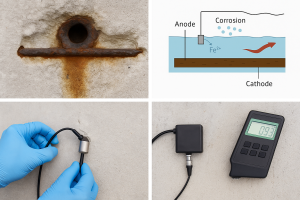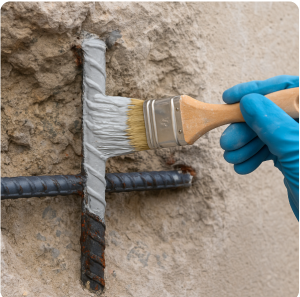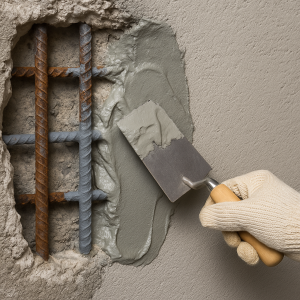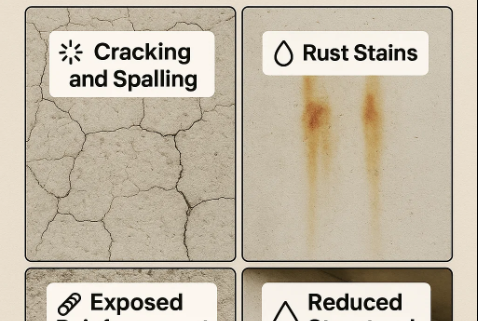Corrosion Assessment Fundamentals for Reinforced Concrete Structures: Your Guide to Comprehensive Structural Assessment and Rehabilitation Programs
For anyone involved in the maintenance and repair of reinforced concrete structures, understanding corrosion assessment fundamentals is crucial. The following guide Corrosion Assessment Fundamentals for Reinforced Concrete Structures: Your Guide to Comprehensive Structural Assessment and Rehabilitation Programs will enable you better corrosion. Corrosion of embedded reinforcement is one of the most common and detrimental issues facing these structures. It can lead to significant deterioration if not addressed promptly. Fortunately, comprehensive structural assessment and rehabilitation programs can help mitigate these issues. By understanding the basics of corrosion assessment, you can ensure the longevity and safety of your concrete structures. For a deeper dive into the science behind corrosion, you might find this Wikipedia article on corrosion helpful.
Understanding Corrosion in Reinforced Concrete
Corrosion in reinforced concrete occurs when the steel reinforcement within the concrete begins to rust. This rusting process is primarily due to the exposure of steel to moisture and oxygen, which can penetrate the concrete over time. As the steel corrodes, it expands, causing the concrete to crack and spall. This not only weakens the structure but also accelerates the corrosion process. Have you ever noticed cracks in a concrete structure and wondered about their cause? It’s often the result of this hidden enemy.
Identifying the Signs of Corrosion
Recognizing the early signs of corrosion can save you time and money in the long run. Look for:
- Cracking and spalling of concrete surfaces
- Rust stains on the concrete
- Exposed reinforcement bars
- Reduced structural integrity
If you spot any of these signs, it’s time to conduct a comprehensive structural assessment and rehabilitation program. Ignoring these signs can lead to more severe damage and costly repairs down the line.
Watch the Article or Listen
Conducting a Comprehensive Structural Assessment
A thorough assessment involves several steps:
- Visual Inspection: Start with a detailed visual inspection of the structure. Look for any visible signs of damage or distress.
- Non-Destructive Testing (NDT): Techniques like ultrasonic testing, ground-penetrating radar, and half-cell potential measurements can provide insights into the condition of the reinforcement without damaging the concrete.
- Sampling and Laboratory Analysis: In some cases, it may be necessary to take concrete samples for laboratory analysis to determine the extent of chloride penetration and carbonation.
- Data Analysis and Reporting: Compile the data collected from the inspections and tests to create a comprehensive report. This report should outline the current condition of the structure and recommend necessary rehabilitation measures.

Rehabilitation Strategies for Corroded Structures
Once you’ve completed the assessment, it’s time to consider rehabilitation strategies. These may include:
- Cathodic Protection: This technique involves applying a small electrical charge to the reinforcement to prevent further corrosion.
- Concrete Repair and Replacement: Damaged concrete can be repaired or replaced to restore the structure’s integrity.

Drizoro Maxrest Passive – may be not true color.
- Coatings and Sealants: Applying protective coatings or sealants can help prevent moisture and oxygen from reaching the reinforcement.
Coatings and Sealants to Waterproof and ProtectMaxseal – Waterproof Cementitious Membranes that all withstand Hydrostatic Pressure
Drizoro Maxseal Flex, Drizoro Maxseal Flex M, Drizoro Maxseal Flex Express, Drizoro Maxseal Foundation, Drizoro Maxseal Super, Drizoro Maxseal TRAFFICClear Concrete Sealers Saturants Sealtight – Seals concrete and stone Ultra Masonry Block Sealer – Designed to Seal porous concrete eg. Blockwork and Porous stone
- Regular Maintenance: Implementing a regular maintenance schedule can help catch potential issues early and extend the life of the structure.

Drizoro Maxrest or Maxrite Spalling Repair
The Role of Technology in Corrosion Assessment
Technology plays a significant role in modern corrosion assessment. Advanced tools and software can help you analyze data more efficiently and accurately. For example, 3D modeling software can create detailed visualizations of the structure, allowing for better planning and execution of rehabilitation programs. Ever tried using a drone for inspection? It’s a game-changer for accessing hard-to-reach areas safely.
Why Choose Online Waterproofing Shop?
At Online Waterproofing Shop, we understand the challenges you face in maintaining reinforced concrete structures. Our range of waterproofing and remedial building maintenance materials is designed to help you tackle corrosion head-on. We’re not just suppliers; we’re partners in your success, providing the tools and expertise you need to protect your investments.
Learn More About Waterproofing
Ready to take the next step in protecting your concrete structures? Learn more about waterproofing and discover how our products can help you maintain the integrity and longevity of your assets. Don’t wait until it’s too late—start your corrosion assessment and rehabilitation program today!
So if looking for the Corrosion Assessment Fundamentals for Reinforced Concrete Structures: Your Guide to Comprehensive Structural Assessment and Rehabilitation Programs … give us a call or email us









